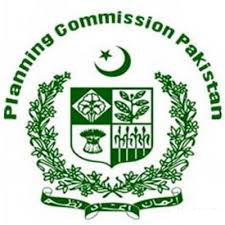
Development & Special Initiatives
Press Release/Tickers

Pakistan-UK Knowledge Corridor: Major Ecosystem of...
Published : 25 April 2024
Planning Minister Ahsan Iqbal held a meeting with a delegation led by ...
Pakistan Embraces Digital Revolution: Ensuring Dig...
Published : 23 April 2024
The digital revolution is reshaping societies worldwide, and Pakistan ...
Pakistan Aims to Reach $3 Trillion Economy by 2047...
Published : 23 April 2024
Pakistan is poised to achieve a $3 trillion economy by 2047, bolstered...
Planning Minister Ahsan Iqbal to receive APO, Meri...
Published : 13 April 2024
Federal Minister for Planning Development and Special Initiatives, Pro...
Deputy Chairman Planning Commission, Ahsan Iqbal Announced the Poverty Line
Dated : 18 April 2016
On April 7, 2016 Government of Pakistan announced resetting of poverty line thus settling the debate which was going on since 2008. Deputy Chairman Planning Commission, Professor Ahsan Iqbal and Minister for Finance, Mr. Mohammad Ishaq Dar made the announcement.
While explaining the need for resetting poverty line, Professor Ahsan Iqbal said that last time poverty line was set in 2001 according to which current headcount of poverty is 9.3%. Such a small number is not useful for development policies and therefore all developing countries reset their poverty threshold when they reach this stage, Pakistan has done the same. The exercise spanned over more than two years and Planning Commission worked closely with academia, poverty experts and development partners to arrive at this decision.
Government could have continued with 2001 poverty line thus having poverty number less than 10% but instead, government committed itself to a higher challenge by resetting the poverty line using 2013-14 Household Integrated Economic Survey. Using this data, the poverty threshold comes out to be Rs. 3030.32 per adult equivalent, which translates into headcount poverty of 29.5%. In absolute terms 29.5% implies that roughly 60 million people are poor.
The 2001-02 poverty line was estimated using Food-Energy-Intake (FEI) method which was good according to the then prevailing socioeconomic conditions of most of the developing countries. However, over the last two decades, socioeconomic development and resulting higher quality of life has made FEI less representative of people consumption and preferences; moreover, FEI has inclination towards food which becomes less relevant to household budget as society develops. These factors led to preference of Cost of Basic Needs (CBN) over FEI as the method to compute poverty, Pakistan followed the suit and current poverty line is computed using CBN.
Transition from FEI to CBN is in line with the Vision 2025 in which government puts highest priority to inclusive and sustainable development by broadening the basic needs from merely food and some non-food to food, health, education, energy, water, sanitation, electricity and connectivity needs of society. Finally, decision to switch from FEI to CBN also increases the harmony between government commitment to Sustainable Development Goals and need of broader money metric poverty measure.








